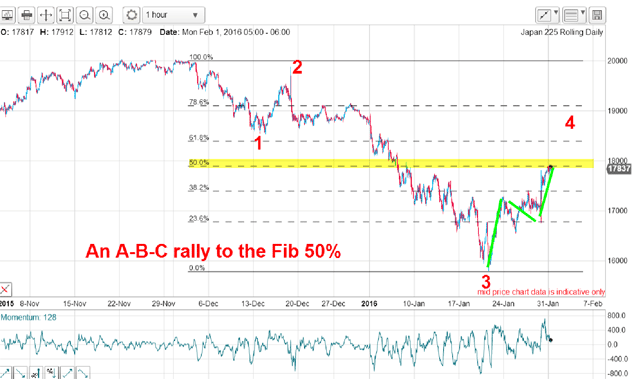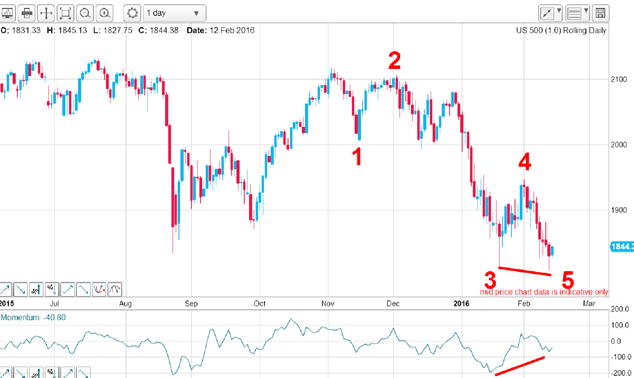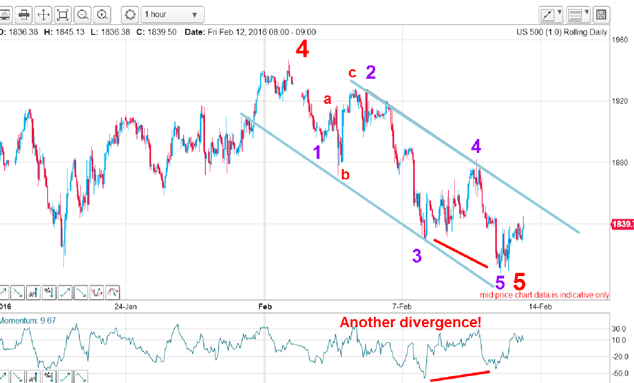The credibility of central banks is being trashed
Traders who saw through the madness of the central banks' actions are reaping their rewards, says John C Burford.
Last year, I forecast that the high regard that central banks enjoyed a regard borne of the utter dependence of stockmarkets on stimulus will be reversed this year. My view is being totally vindicated as they watch helplessly the dramatic slide in global stockmarkets this year. They are fast going from hero to zero.
That poor old can that was being kicked down the road has disintegrated.
Basically, the mammoth debt load carried by almost every commercial and government entity that was whipped up by the desperate quantitative easing and zero interest-rate/negative interest rate policies (Zirp/Nirp) is now toppling over.
MoneyWeek
Subscribe to MoneyWeek today and get your first six magazine issues absolutely FREE

Sign up to Money Morning
Don't miss the latest investment and personal finances news, market analysis, plus money-saving tips with our free twice-daily newsletter
Don't miss the latest investment and personal finances news, market analysis, plus money-saving tips with our free twice-daily newsletter
I have been waiting for this to occur and traders/investors who like me also saw this was a disaster waiting to happen are reaping their just rewards.
The latest supreme example of central bank mismanagement and folly is Japan.
In my postof 1 February, I noted that the Bank of Japan (BoJ) had just forced its benchmark interest rate to below zero in a frantic effort to force consumer inflation towards its magic 2% target. That move induced an initial knee-jerk rally in stocks and a drop in the value of the yen.
This was the hourly chart of the Nikkei 225 that I showed:

This was a classic setup for a resumption of the bear trend, as I noted. There was an A-B-C rally in my wave 4 to the precise Fibonacci 50% resistance level.
In fact, the market was giving me a textbook short trade one with high probability and low risk. I could set my protective buy stop just above that 50% level in case I was wrong.
So why would I pit my puny efforts against one of the most powerful global central banks? Surely, they had all the firepower needed to obliterate me.
As I noted last time, I had history on my side. This is what I wrote: "It is a little-known fact that whenever the Fed announced its various QE and ZIRP schemes since 2008, the US stockmarket made a significant high and sold off. It was the classic buy the rumour, sell the news' result. Will history repeat for the BoJ?"
And this is the current chart:

What a result! With a 3,000 point decline off the 1 February 1, the BoJ must be feeling a tad sheepish! Ouch.
And what about the yen with the negative interest rate (and other QE operations) regime, many expected the yen to weaken. That has been the modus operandi of the currency warriers to stimulate exports by weakening the currency.
But markets do not always follow the "obvious" path of course. Here is the USD/JPY chart:

In less than two weeks, the yen has moved from 122 to 112 a staggeringly fast move in a flight to safety. Again, the BoJ has been left floundering and overnight I read that it will now "take measures" to halt the "shock" rise of the yen, which is hurting its exporters badly.
If it does intervene in the currency market, it will almost certainly suffer the same fate as that of King Canute as he tried to stop the rising tide. But the King was wiser than central bankers because his intention was to show that he was powerless to stop it, despite the belief of his subjects that he was so powerful he could do anything.
No, these are acts of sheer desperation very late in the credit cycle that are being thrown by central banks in their futile war against deflation. They (and we) know that deflation means just that a highly deflated stockmarket resulting from a wave of debt defaults (AKArestructurings). Liquidity is drying up, despite all of the central banks' efforts using QE.
As stockmarkets grind ever lower, more people will rise up against the central banks' influence and their very existence will come under threat.
With the current fear stalking the markets gold is up over $100 in February alone will stocks continue their descent in the short-term? Let's take a look at the S&P 500 for clues.
Here is the daily chart showing a valid set of wave labels:

With yesterday's move to a new low, I may have the final wave 5 in place. Now that would be an interesting development. While every shoeshine boy and financial journalist in mainstream media is busy shorting shares (see my post of 1 February), can this be a great setup for a counter-trend rally of some magnitude?
That would shock the vast majority with bearish sentiment so strong and that is what markets do, they hand the biggest majority the biggest losses.
I have potentially a complete five down and there is a huge momentum divergence forming. If this is not corrected by a move to new lows soon, it will stand as a forewarning of a corrective rally ahead.
For more clues, let's examine the wave 5 off the wave 4 high on the hourly chart:

My red wave 5 is trading between my blue tramlines, and there is a potentially complete five down (purple) and another momentum divergence that also shows up on the daily.
If the market is going to shock the bears, this is as good a place as any to start.
Of course, a move above my upper tramline would reinforce the bullish case and a move to the 1,880 level at least would be likely.
But do the central banks have one more ace up their collective sleeve? Will they all join the Nirp club, as some have already done? I have a feeling that next week will provide clues.
Get the latest financial news, insights and expert analysis from our award-winning MoneyWeek team, to help you understand what really matters when it comes to your finances.
John is is a British-born lapsed PhD physicist, who previously worked for Nasa on the Mars exploration team. He is a former commodity trading advisor with the US Commodities Futures Trading Commission, and worked in a boutique futures house in California in the 1980s.
He was a partner in one of the first futures newsletter advisory services, based in Washington DC, specialising in pork bellies and currencies. John is primarily a chart-reading trader, having cut his trading teeth in the days before PCs.
As well as his work in the financial world, he has launched, run and sold several 'real' businesses producing 'real' products.
-
 Why pension transfers are so tricky
Why pension transfers are so trickyInvestors could lose out when they do a pension transfer, as the process is fraught with risk and requires advice, says David Prosser
-
 The political economy of Clarkson’s Farm
The political economy of Clarkson’s FarmOpinion Clarkson’s Farm is an amusing TV show that proves to be an insightful portrayal of political and economic life, says Stuart Watkins